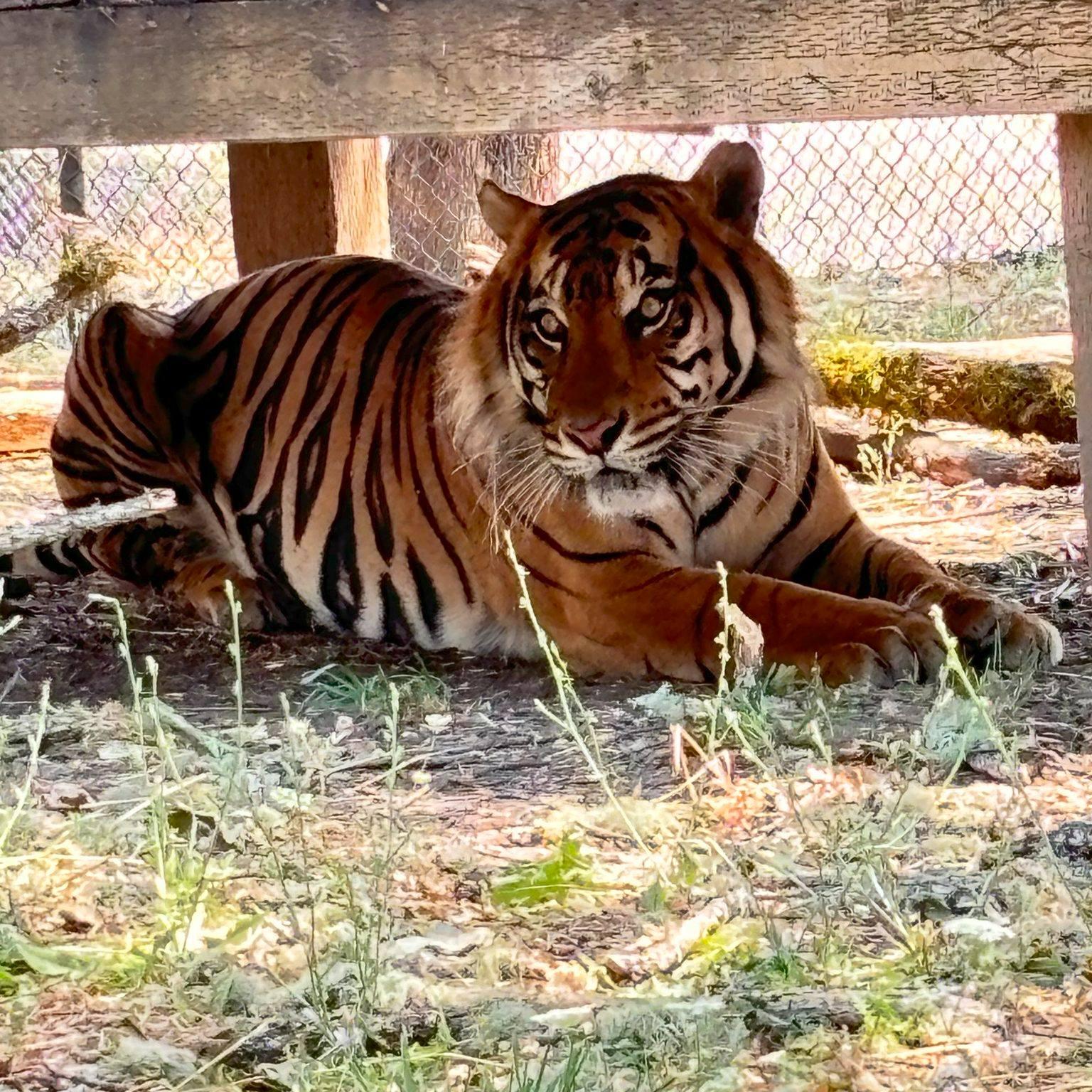- The role and significance of Sumatran tigers in wildlife conservation efforts
- The challenges and strategies in managing a healthy habitat for Sumatran tigers in captivity
- Behavioral adaptations and natural history of Sumatran tigers
- The importance of public education and engagement in wildlife conservation
- Experiencing wildlife up close: Visiting Wildlife Safari and meeting Bini
The Sumatran tiger, scientifically known as Panthera tigris sumatrae, represents one of the most critically endangered tiger subspecies on the planet. This majestic species inhabits the dwindling forests of Sumatra, an island in Indonesia. The conservation of these tigers is paramount due to their status as apex predators, reflecting the health of their ecosystem. The pressing need to preserve them stems from rampant deforestation, poaching, and human-wildlife conflict, which have decimated their population, leaving only a few hundred individuals in the wild. Bini, a male Sumatran tiger, plays a pivotal role in raising awareness and educating the public about the plight of his species.
Ensuring that Sumatran tigers like Bini thrive in captivity demands understanding their natural habitat and its replication. Within wildlife parks and zoos, one of the main challenges is creating an environment that stimulates the tiger’s instinctual behaviors and dietary needs. Enclosures must be spacious to accommodate their need for territory, enriched with naturalistic elements like trees, water bodies, and shaded areas. Shade is particularly critical for thermal regulation, providing a cool respite distinct from the often warmer temperatures of captive environments. Bini’s preference for lounging in the shade during hot days is a testimony to this necessity. Moreover, engaging in behaviors such as stalking, pouncing, and hiding provides physical exercise and mental stimulation, promoting overall well-being.
Understanding the natural history and behavior of Sumatran tigers is key to their conservation. These tigers are solitary by nature, with each individual maintaining a territory that can span several square miles. Their diet mainly consists of various prey such as deer, wild boar, and even smaller animals like birds and fish. Unlike other tiger subspecies, Sumatran tigers have adapted to their specific environment, showing distinct characteristics such as a smaller size and darker, more closely spaced stripes, which provide excellent camouflage in the dense jungle. Bini, like his wild counterparts, exhibits these adaptations, manifesting his evolutionary heritage.
Summers at Wildlife Safari offer visitors a unique opportunity to observe Bini’s behaviors firsthand, fostering a connection beyond mere observation. Education plays a crucial role in conservation, and Bini serves as an ambassador for his endangered species. By engaging the public, particularly through guided tours and educational programs, Wildlife Safari not only raises awareness but also inspires action. Learning about the ecological roles that tigers play, such as controlling prey populations and maintaining the balance of the ecosystem, helps visitors appreciate the interdependence of natural systems.
Wildlife parks like Wildlife Safari offer an experiential educational platform that textbooks and documentaries simply cannot match. By visiting Bini, guests gain a tangible understanding of wildlife conservation efforts and the daily challenges these programs face. From efforts to combat poaching to initiatives aimed at habitat preservation, the presence of a living, breathing tiger can catalyze public support for broader conservation initiatives. Observing Bini relax in his shaded enclosure underlines the importance of habitat features that seem mundane but are crucial for a tiger’s survival and comfort.
Bini epitomizes the critical intersection of conservation, education, and public engagement. Wildlife parks provide an invaluable service by simulating these magnificent creatures’ natural environment while educating the public on the importance of conserving our planet’s biodiversity. By visiting Bini and other animals at Wildlife Safari, individuals contribute to a larger narrative that underscores the urgency of wildlife conservation. Each visit supports the ongoing efforts to provide a sanctuary for endangered species while spreading awareness and fostering a collective sense of responsibility towards ecological stewardship.
In summary, conserving Sumatran tigers like Bini is an extensive endeavor involving habitat management, behavior understanding, and public education. By providing a well-maintained habitat that mimics their natural environment, wildlife parks help tigers thrive in captivity. Bini serves as a display animal and a powerful symbol of the urgent need for conservation efforts worldwide. Guests at Wildlife Safari can witness, learn, and participate in the vital work of protecting these incredible creatures, reinforcing a global commitment to biodiversity conservation.
*****
Source Description
Beat the heat with Bini! ☀ Our majestic male Sumatran tiger knows just how to stay cool on a hot day—relaxing in the shade! 🐯🌳 Come visit Wildlife Safari and see Bini in all his striped glory. He’s the purr-fect reason to spend a summer day with us!


